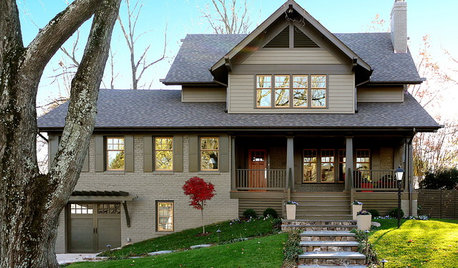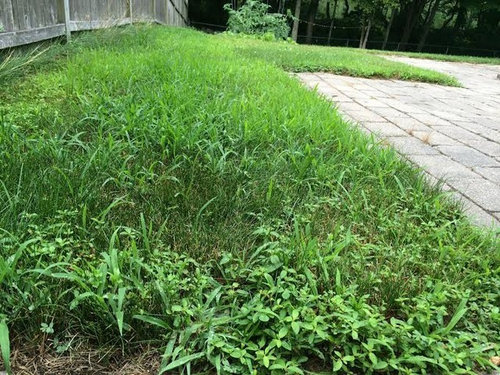50/50 lawn and weeds
schroeac
9 years ago
Related Stories

EDIBLE GARDENSNatural Ways to Get Rid of Weeds in Your Garden
Use these techniques to help prevent the spread of weeds and to learn about your soil
Full Story
GARDENING GUIDESLet's Weed Out 4 Native Plant Myths
Plant wisely for a garden that supports pollinators and requires less work
Full Story
REMODELING GUIDESHouzz Tour: Turning a ’50s Ranch Into a Craftsman Bungalow
With a new second story and remodeled rooms, this Maryland home has plenty of space for family and friends
Full Story
KITCHEN DESIGNPersonal Style: 50 Clever Real-Life Kitchen Design Details
Get ideas from savvy homeowners who have a knack for creating kitchens celebrating personal style
Full Story
PETS50 Dog Photos Worth a Wag
Design hounds: Share in the pet love with Houzzers' snapshots of their beloved dogs at home, in the workshop and at play
Full Story
EARTH DAYThe Case for Losing the Traditional Lawn
Work less, help the environment and foster connections by just saying no to typical turf
Full Story
LANDSCAPE DESIGNGet Along With Less Lawn — Ideas to Save Water and Effort
Ditch the mower and lower your water bill while creating a feast for the eyes with diverse plantings and gathering places
Full Story
GARDENING GUIDESHow to Fix Bare and Yellow Lawn Spots
Restore your turf’s good looks by reseeding unsightly patches
Full Story
BEFORE AND AFTERSSee 6 Yards Transformed by Losing Their Lawns
Wondering whether a turf lawn is the best use of your outdoor space? These homeowners did, and they found creative alternatives
Full Story
FRONT YARD IDEASBefore and After: Front Lawn to Prairie Garden
How they did it: Homeowners create a plan, stick to it and keep the neighbors (and wildlife) in mind
Full Story







schroeacOriginal Author
schroeacOriginal Author
Related Professionals
Forest Acres Landscape Architects & Landscape Designers · Roosevelt Landscape Architects & Landscape Designers · Williamsburg Landscape Contractors · Arlington Landscape Contractors · Beachwood Landscape Contractors · Bergenfield Landscape Contractors · Fuquay-Varina Landscape Contractors · Hampton Bays Landscape Contractors · Morrisville Landscape Contractors · Pleasanton Landscape Contractors · Suitland Landscape Contractors · Wilsonville Landscape Contractors · Chicago Ridge Landscape Contractors · San Pablo Landscape Contractors · Chatsworth Swimming Pool Buildersdchall_san_antonio
schroeacOriginal Author
dchall_san_antonio
schroeacOriginal Author
dchall_san_antonio
schroeacOriginal Author
dchall_san_antonio